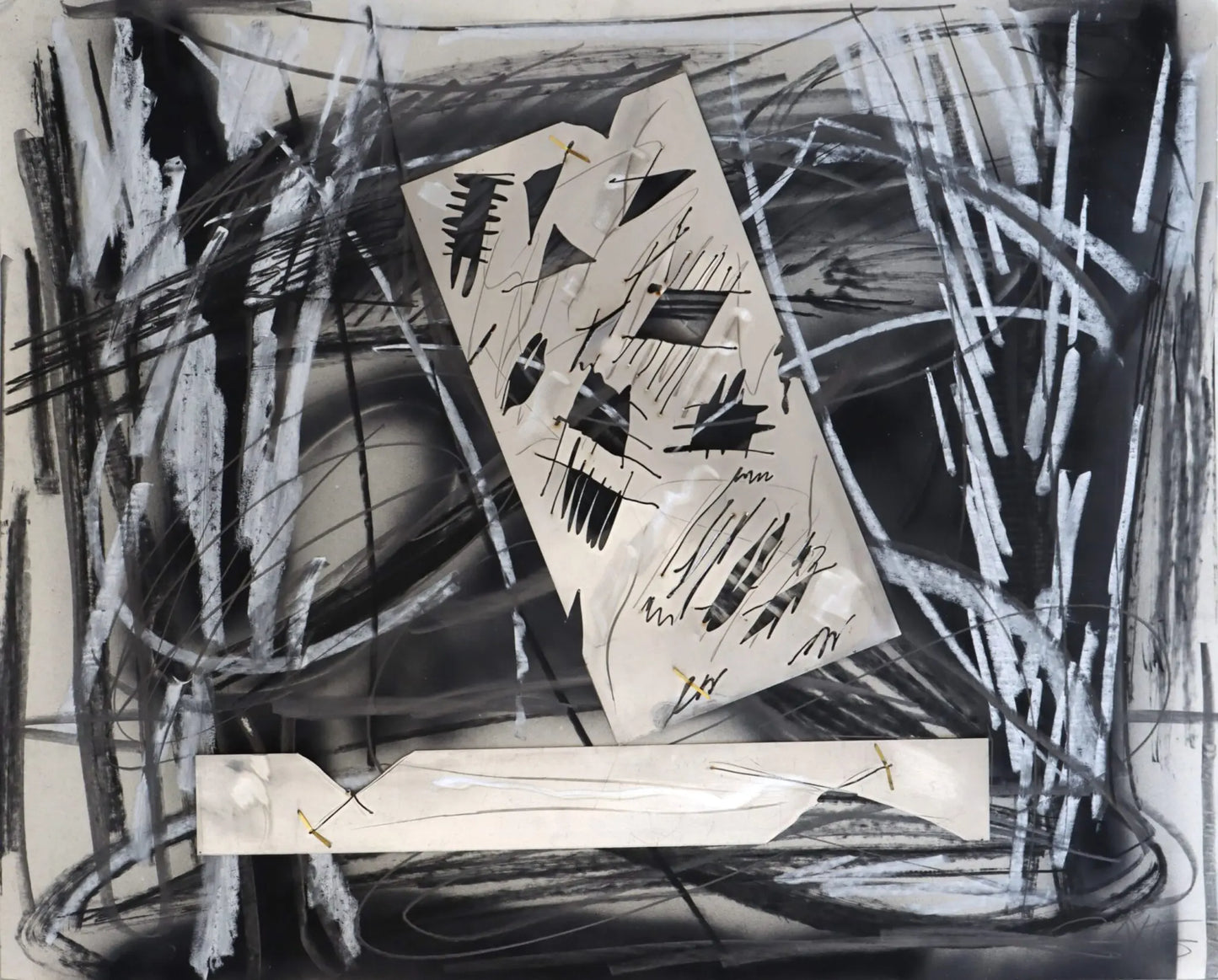Untitled 8, n.d.
Untitled 8, n.d.
Mixed media, metal on paper board, framed.
$6,500 CAD
- Shipping cost is additional


About Henry Saxe
Canadian sculptor, Henry Saxe was born in Montreal, Quebec in 1937. He attended the École des Beaux-Arts de Montréal. He later settled in the countryside of Tamworth, Ontario. While sculpture remains his main focus, Saxe also practices drawing and painting. In the sixties, his works represented a clash between constructivism and abstract expressionism. These two- dimensional works tie into Saxe’s sculptural practice as they deal with concepts of balance, juxtaposition and distribution. Surfaces are often etched or cut to create jagged and fractured forms. Aluminum plates which absorb and reflect light from multiple angles are also often incorporated in his work.
His early years coincided with the political, social and artistic upheaval in Quebec, beginning with Les Automatistes followed a few years later by the publication of the anti –establishment, anti religious manifesto Le Refus Global, and then by another non-figurative movement, Les Plasticiens. During this period of change Saxe became acquainted with and developed friendships with Guido Molinari, Yves Gaucher, Ulysse Comptois, Jacques Hurtubise and Claude Tousignant. His early influences were the American abstract expressionist Willem de Kooning (1904 – 1997) and the American minimalist David Smith (1906 – 1965). Both played an important role in Saxe’s career as he began to develop a constructivist theme that continues to this day.
Saxe has received numerous awards, including the Order of Canada and Quebec’s prestigious Borduas Prize. He has had major solo exhibitions throughout Canada including at the National Gallery of Canada, and Musee d’Art Contemporain de Montreal. He represented Canada at the Venice Biennale (1978). Most recently he has had solo exhibitions in the Freedman Gallery at Albright College in Reading, Pennsylvania and at The University of Sherbrook in Quebec.







